| Phang Na cave is the biggest cave in Asia. The Viet Cong used it to
store men and materiel on the way to the Ho Chi Minh trail. The active
branch of the HCM trail is off to the left of this photo, but there
isn't really much left of it other than a plaque. Of course, there
wasn't much of it but a bicycle track during the war either, so that's
not all that surprising. The big rock you see to the right is the sum
total of the damage done by a U.S. attempt to shut it down with
bombing. I couldn't find out if the small temple off to the right was
destroyed and rebuilt, or just missed. |
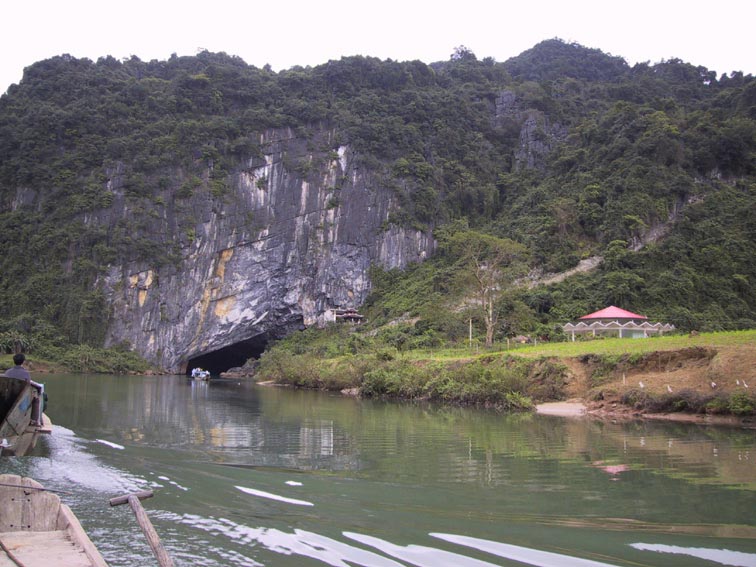 |
| This will show you the general quality of the boat we took. Tourism is
pretty slow just now, so the couple that took us out had been waiting
six days for this one load of tourists. They work in the fields in the
meantime, but they really prefer the boat work, probably because the
tip I gave them was several day's wages in the fields. |
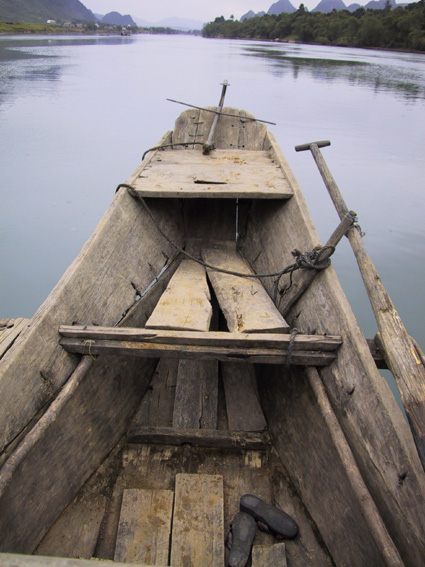 |
| I remember taking this photo as a kind of "aha" experience.
I looked around at the mountains around me, and really felt at home. I
wasn't Vietnam so much as being back in the mountains. I made me
realize I've spent just about too long in the flatlands. |
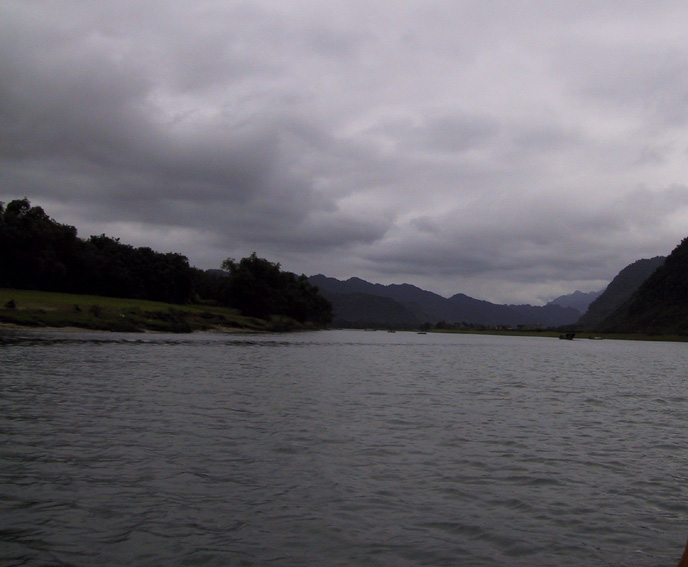 |
| The DMZ was the scene of of some of the bloodiest fighting of the war.
It isn't all that hard to figure out why if you look at the map. The
Viet Minh and NVA were just over the border. We took the bus from Phang
Na Cave to this area in less than 2 hours. There are still some
substantial areas of scorched earth in various parts of the zone, but
all we could see was this monument with the ubiquitous HCM image. This
was the very first day for cycling, and it was raining so we took the
bus that day :( |
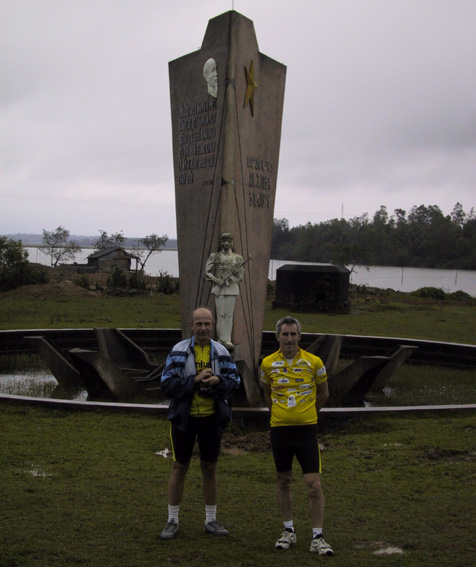 |
| The citadel at Hue was the old imperial city, and the capital of
Vietnam off and on. There was extremely bloody fighting in the citadel
during the Tet Offensive in 1968, but a lot of it remains intact
including some urns that are among the biggest ever cast in one piece. |
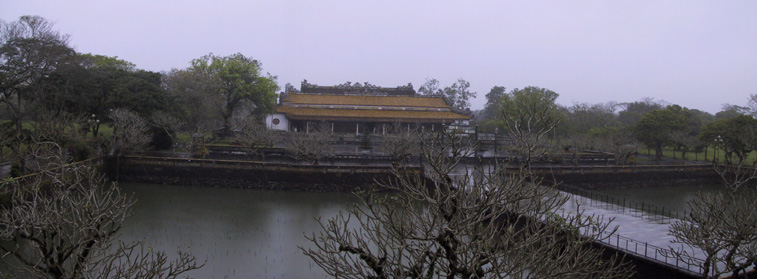 |
|
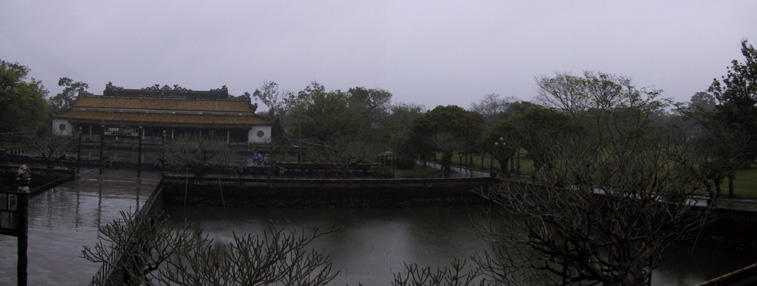 |
| The flag here is on one of the guard towers on the outer wall. The
imperial city had three levels. The people that manned this level and
did any fighting that need to be done weren't even allowed to go inside
of the second level, let alone the third. |
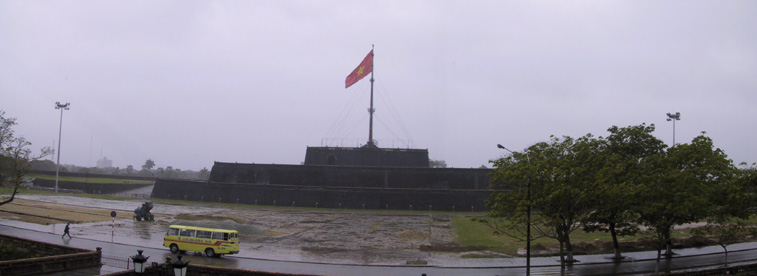 |
| This mausoleum about 15 km outside of Hue was where coronation and
other important imperial ceremonies were carried out. |
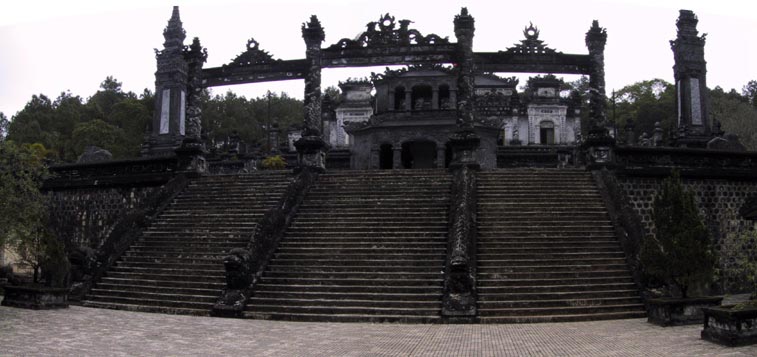 |
|
.jpg)
Photo Courtesy Et Tienne
|
| As you can see, I still compete with the elephant in size so more
cycling is obviously required. |
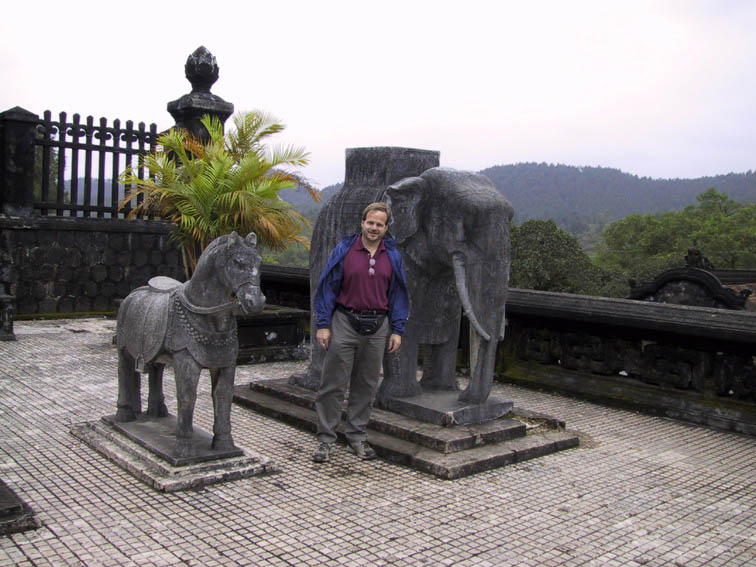 |
| This is Thien Mu (Celestial Lady Pagoda), built in 1601. If you
remember the magic numbers, the magic number for Buddhism is seven.
It's hard to see here but the temple has seven tiers, each of which
represents a different incarnation of Buddha. Vietnamese Buddhism is a
mix of several brands of Buddhism, with the predominant influences
coming over sea from India and over land from China. |
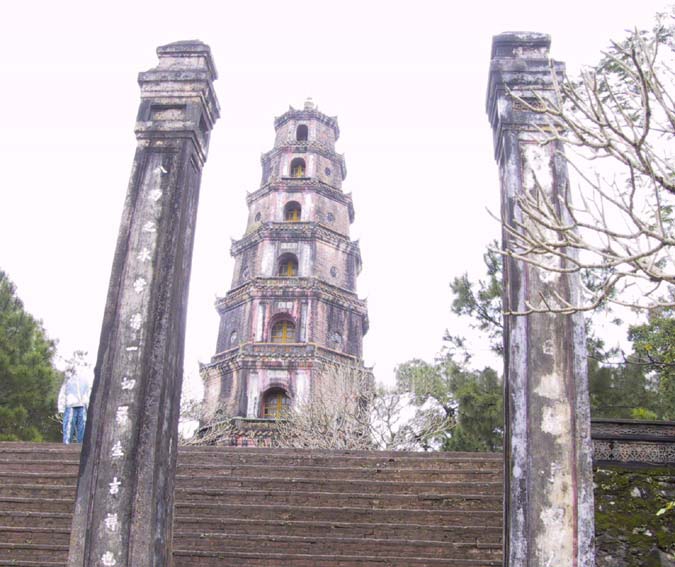 |
| This car is associated with one of the most enduring images of the
American War. In 1963, the Buddhist master of this temple drove this
particular car into Saigon, got out, poured gasoline all over himself
and burned himself to death to protest the Diem regime's harsh
discriminatory policies against Buddhists. Diem was a power-mad
Catholic in a predominantly Buddhist country, so it isn't all that
surprising. At that point, Kennedy's "Special War" had been
going on for some time, but Vietnam hadn't really entered the American
People's conscience. Photos of his bonfire blazed across television
screens and newspapers around the world, and is frequently thought of
as the signal for the beginning of the end for the Diem regime. |
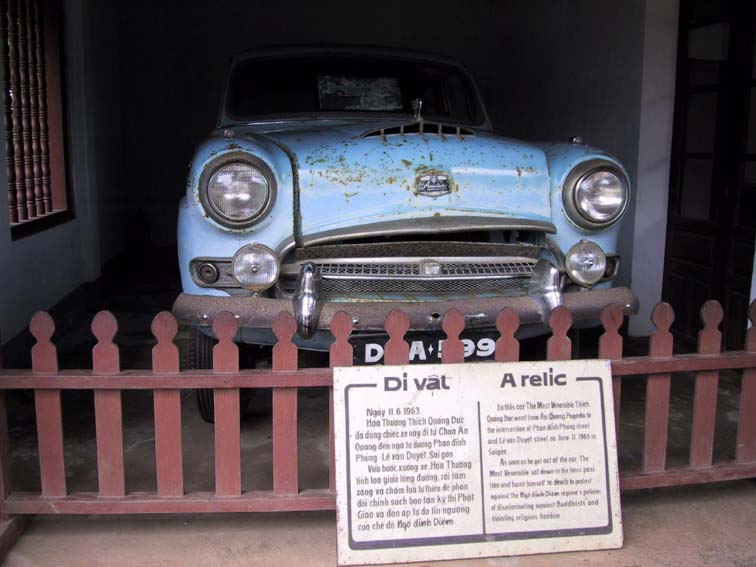 |








.jpg)











.jpg)


